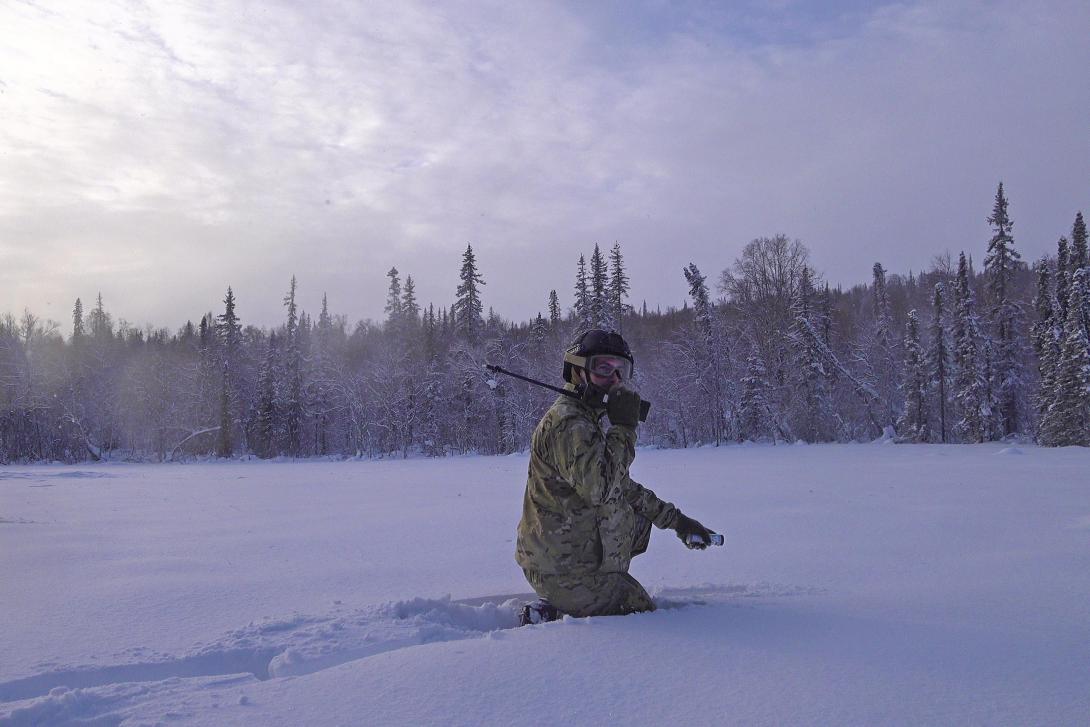Joint Tactical Networking Center Aims for Resilience Excellence
In an effort to become the U.S. Defense Department’s center of excellence for software-defined radios (SDRs) and waveforms, the Joint Tactical Networking Center (JTNC) is transitioning its two primary tools to a cloud computing environment.
The JTNC supports the rapid identification, characterization, procurement, fielding and sustainment of communications products that ensure secure, interoperable and resilient command, control, communications, computer, intelligence, surveillance and reconnaissance capabilities. It supports the Office of the Under Secretary of Defense for Acquisition, Technology and Logistics, the Defense Department chief information officer, and various service initiatives by providing technical expertise for waveform exportability and facilitating standardization of key waveform interfaces.
As part of its core duties, the JTNC maintains an information repository for military waveforms and provides the Joint Communications Marketplace a knowledge repository for tactical communications products and technologies.
Both tools are now moving to a cloud environment to support information sharing between the Defense Department and industry in an era in which the department depends largely on proprietary, commercial technology to which it does not own intellectual property rights. U.S. Navy officials have agreed to transition the information repository through its Flank Speed initiative.
When they move to the cloud, both tools will contain impact level 5 (IL5) and impact level 6 (IL6) information. IL5 describes unclassified information marked sensitive or controlled, and IL6 refers to information classified at the secret level. The transition is expected to take two years, with sensitive but non-classified information being moved in phase one and secret information in phase two.
“Industry is now building in their own waveforms. It’s proprietary. It’s classified, and it’s difficult for them to share this information with the government,” Kurt Reese, director of the JTNC, said. “What they’re finding out now is that with that attitude, they actually create closed markets. It is difficult to gain new contract activity. Now, with the new high-trust environment we’re creating with IL5 and IL6 activities inside our Joint Communications Marketplace and Department of Defense Information Repository, industry is really embracing the idea of trusting JTNC to house the information and share it on a case-by-case basis to high-interest government equities.”
Enhanced information sharing might also help industry to shepherd systems through the infamous “Valley of Death,” a metaphor for the failure of newly developed technology to be adopted and used. “This is going to dramatically increase data sharing of pre-acquisition activity with industry and, hopefully, close the Valley of Death,” Reese said.
The cloud migration is spurred in part by the Defense Department’s need to build more resilient systems capable of withstanding and rapidly recovering from deliberate attacks, accidents or naturally occurring threats. Reese intends for the JTNC to become a center of excellence for resilience and a knowledge broker for software-defined radios and waveforms.
“Between those two tools, this is how we’re going to achieve the knowledge broker role and ambitions for the JTNC within the Defense Department. And then the resiliency piece is a companion activity where we’re going to work hard with industry to gather information and share that information within the department,” Reese offered.
Reese’s team is working with officials within the Office of the Secretary of Defense to enhance the resilience of tactical networking technologies. On October 27, the Defense Department is expected to host a tutorial for industry.
In addition, the JTNC and the Office of the Under Secretary of Defense for Research and Engineering will host a three-day event November 7-9 to allow industry to share information on their waveforms. In preparation for the event, JTNC personnel surveyed vendors with a four-page questionnaire. More than 45 companies responded and more than 20 provided information on 32 different waveforms.
In December and January, officials will follow up with business opportunities with what Reese described as “matchmaking-type activity for high-interest areas that benefit industry and government.”
JTNC officials also teamed with the Joint Interoperability Test Command to create an Interoperability Architecture Working Group designed to address challenges with high-frequency (HF) radios. The two organizations co-led the working group. “Through one of our governance working groups, an overseer, we were asked to create a sub-working group to tackle the HF interoperability issues that are known issues today with radios that are just coming off the production line,” Reese reported.
The group’s work contributes to the Defense Department’s vision for joint all-domain command and control, or JADC2, Reese explained. “The high value there is most folks realize HF is extremely important to JADC2, but people didn’t realize that a lot of radios today were built with standards that exist, but there are radios being built today that cannot talk to each other.”
The working group helped five radio vendors to resolve interoperability challenges during the Bold Quest exercise. “We built on an initiative for Bold Quest, which is focused on HF improvements. Out at Fort Huachuca, we brought in five vendors, and we got them to bring their equipment, and this team and vendors all worked together—probably for the first time—to demonstrate the interoperability issues and challenges.”
While at Fort Huachuca, vendors made “necessary corrections to firmware and software that mitigated those interoperability issues and challenges, and they reported with 100% success that they have the knowledge to resolve interoperability issues and challenges,” the JTNC director added. “There is, of course, more work to make sure those corrections get on contract and the radios get improved over time.”





Comments